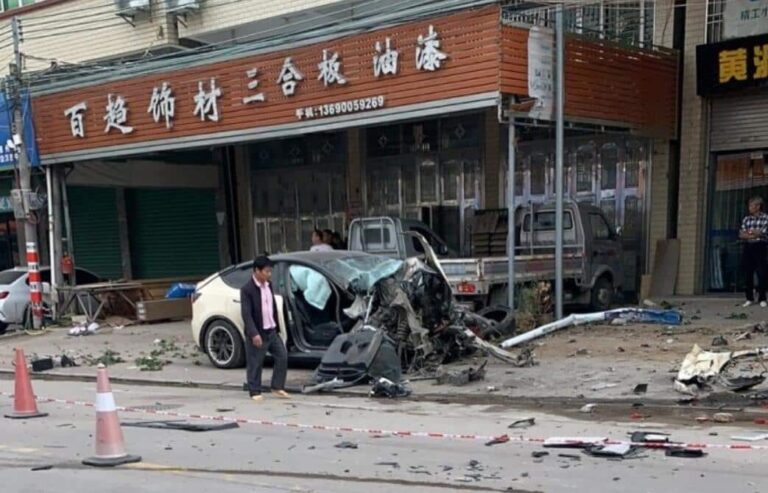The recall involves the vehicles' regenerative braking strategy, which Tesla plans to update via OTA to reduce the risk of crashes due to prolonged deep pressing of the accelerator pedal.
(Image credit: CnEVPost)
Tesla is conducting its largest recall in China, albeit another one caused by a software setting and fixable via OTA.
Effective May 29, 2023, Tesla is recalling a total of 1,104,622 imported Model S, Model X, Model 3 and China-made Model 3 and Model Y vehicles with production dates between January 12, 2019 and April 24, 2023.
The vehicles included in this recall do not allow the driver to select a regenerative braking strategy, according to an announcement by China's State Administration for Market Regulation (SAMR).
Also, these vehicles may not provide adequate warnings to drivers who depress the accelerator pedal deeply for extended periods of time.
The combination of the above factors may increase the probability that a driver will accidentally depress the accelerator pedal for an extended period of time, which may increase the risk of a crash and present a safety hazard, according to the announcement.
Tesla plans to push newly developed features for the recalled vehicles through OTA updates to reduce the risk of collisions caused by prolonged deep depression of the accelerator pedal that results in excessive speed.
The new features include:
(1) Provides options to allow the driver to select the regenerative braking intensity on vehicles that do not have regenerative braking intensity selection.
(2) Adjusts the factory default state of the vehicle's regenerative braking strategy.
(3) Alerts the driver when the accelerator pedal is depressed deeply for an extended period of time.
Stepping on the wrong pedal is a common cause of traffic accidents, and the update is dedicated to reducing the probability of accidents caused by deep missteps on the pedal, said a response from Tesla, as quoted by Southern Metropolis Daily.
Tesla has a factory in Shanghai that produces the Model 3 as well as the Model Y. The recall appears to cover all of Tesla's vehicles in China.
The plant started operations at the end of 2019 and started deliveries of locally produced Model 3 in January 2020 and locally produced Model Y in January 2021.
As of the end of April, 469,255 Model 3s and 606,574 Model Ys made by the Shanghai plant were delivered in China, for a total of 1,075,829 units, according to data monitored by CnEVPost.
Starting in January 2021, both Tesla's Model 3 and Model Y delivered in China remove the lightest option for regenerative braking, essentially forcing drivers to adapt to its single-pedal driving logic. The Model 3s produced in 2020 have always had the option.
While this is seen as increasing the range of the vehicle, it has been criticized by many, especially those previously used to driving fuel cars.
In the so-called single-pedal mode, the driver depresses the accelerator pedal to accelerate the vehicle, and when the accelerator pedal is released, the vehicle slows down significantly, unlike the driving experience of a fuel car.
Over the past few years, there have been several traffic accidents in China that have caused Tesla to enter the spotlight. There has been a lot of criticism on social media about the single-pedal mode when each accident occurred, even though there is no evidence that the mode caused the accident.
The last such accident occurred last November when a man driving a Tesla vehicle in Chaozhou, Guangdong province in southern China, lost control of the vehicle and accelerated while preparing to park it.
The vehicle traveled at high speed for 2 kilometers while out of control, knocking down two motorcycles and two bicycles, killing two people as well as injuring three others, according to previous media reports.
Backend data showed that the vehicle's accelerator pedal was depressed deeply for an extended period of time and remained at 100 percent at one point, with no action by the driver to apply the brakes the entire time, Tesla said at the time.
During the vehicle's journey, the driver briefly pressed the park gear button four times and quickly released it, while the brake lights also quickly lit up and went off, according to Tesla.
Late last month, a log circulating on Chinese social media about a new OTA update for Tesla showed that the EV maker began offering a regenerative braking option for the lightest intensity for vehicles built after 2020.
Tesla has yet to officially announce the OTA update, and it appears to be part of today's recall fix.


